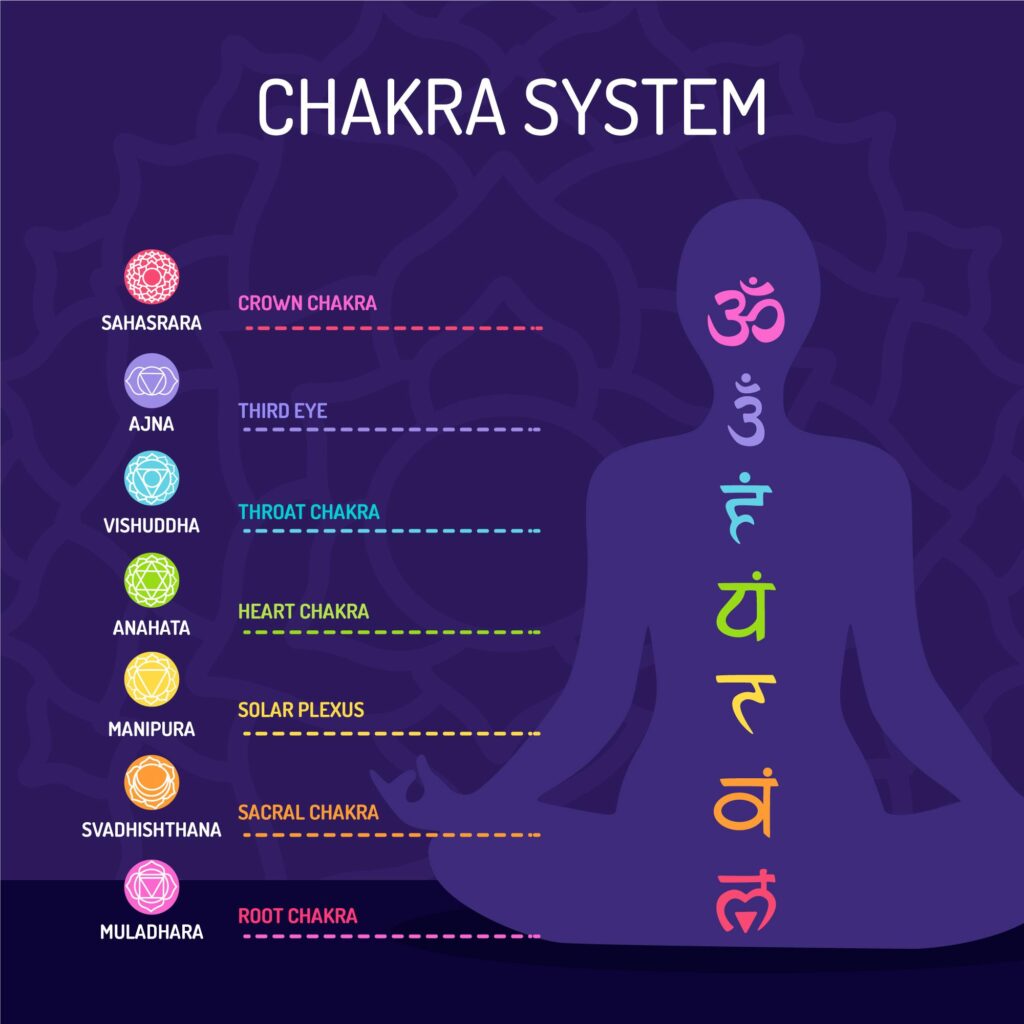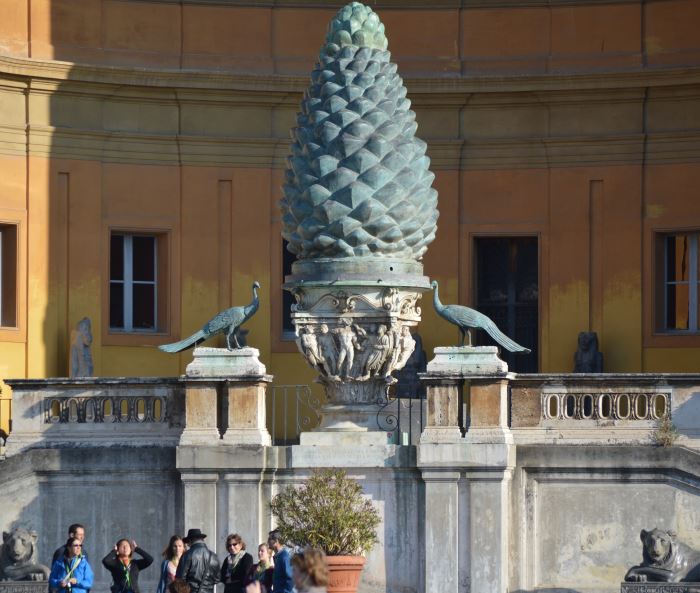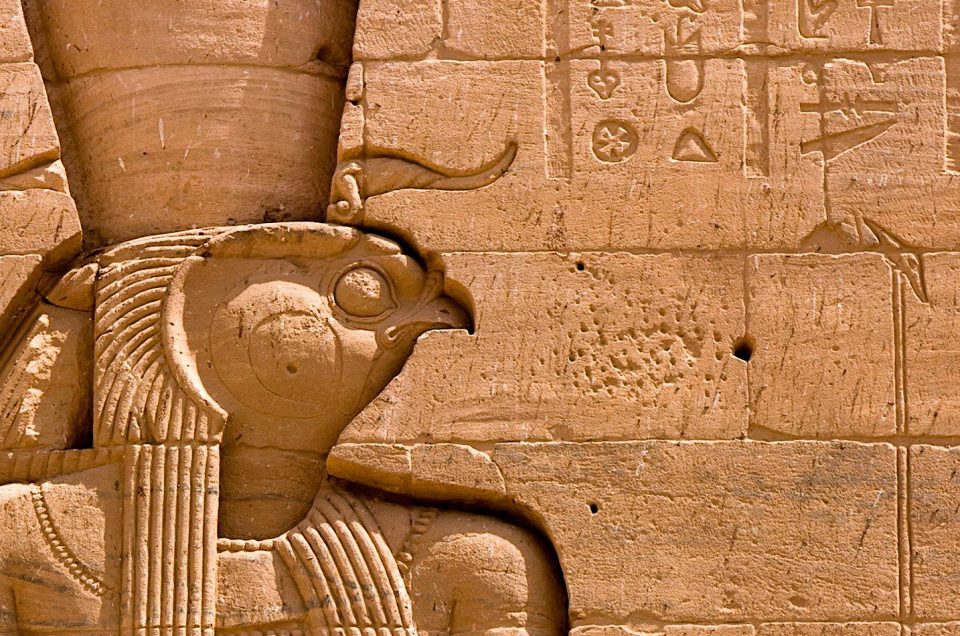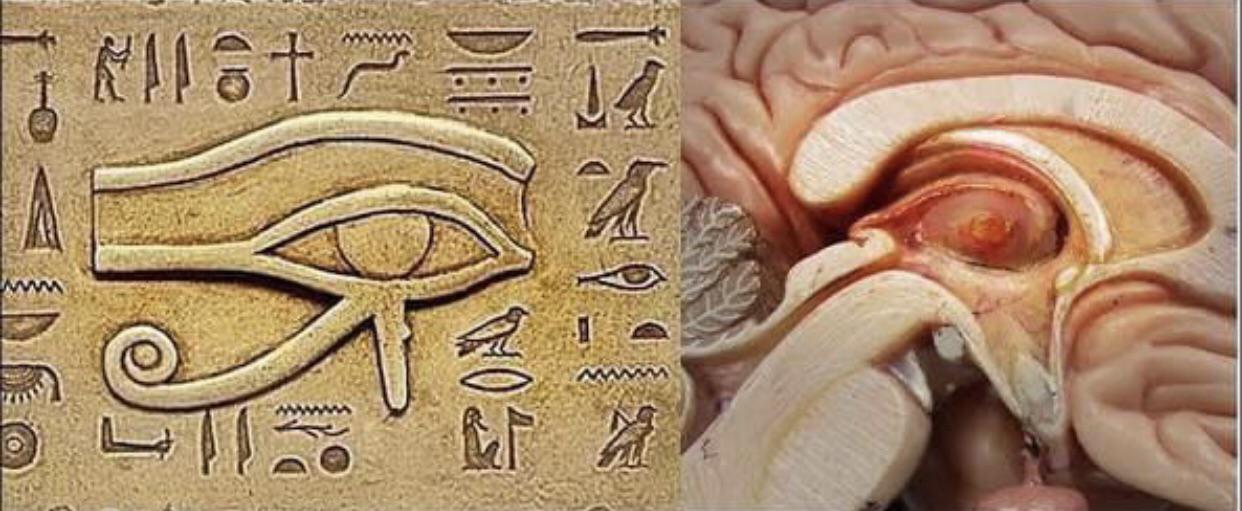Today we shed some light on the pineal gland eye of horus connection, and why so many believe there to be a profound connection between the two. Is it merely a coincidence that the ancient Egyptians created a symbol resembling the inner structure of the human brain? Or is there a deep and meaningful symbolic relationship waiting to be uncovered—one that bridges the gap between modern neuroscience and ancient spiritual wisdom?
Let’s take a journey through science, spirituality, and symbolism to understand the fascinating relationship between the pineal gland and the Eye of Horus.
Table of Contents
What is the Pineal Gland?
Let’s begin with the modern scientific perspective. According to Wikipedia, the pineal gland “is a small endocrine gland in the brain of most vertebrates. It produces melatonin, a serotonin-derived hormone which modulates sleep patterns in both circadian and seasonal cycles.”
In plain terms, the pineal gland helps regulate our sleep and wake cycles by producing melatonin, especially in response to light and darkness. It’s located near the center of the brain, between the two hemispheres, in a groove where the two halves of the thalamus join.
While the scientific community acknowledges the gland’s biological role, there’s a growing belief—especially among spiritual seekers—that its potential goes far beyond regulating sleep.
This pinecone-shaped structure has captivated mystics, philosophers, and sages for thousands of years. Some even call it the “seat of the soul.” But why?
Beyond Biology: Spiritual Perspectives on the Pineal Gland
To truly understand the pineal gland, we must move beyond the laboratory and into the realm of ancient wisdom. Many spiritual traditions have long considered this gland to be far more than a biological organ. Instead, they see it as a gateway to higher consciousness, divine perception, and spiritual awakening.
The Vedic Tradition and the “Third Eye”

One of the most well-known spiritual associations with the pineal gland comes from the Vedic tradition of ancient India. In this system, the body is said to contain subtle energy centers known as chakras. These chakras are believed to govern not just physical functions but also emotional and spiritual well-being.
The Ajna chakra, often referred to as the “third eye,” is located in the center of the forehead, slightly above the space between the eyebrows. Its name in Sanskrit can be translated as “command,” “authority,” or “perception.” This chakra governs intuition, inner vision, and insight.
Many believe that the Ajna chakra directly corresponds to the pineal gland in the physical body. When activated, this center is said to allow us to perceive spiritual realities, receive higher wisdom, and experience non-ordinary states of consciousness.
Christianity and the Pine Cone Symbol

While the Eastern traditions are often associated with the pineal gland and the third eye, the Western world has its own intriguing symbols.
For example, at the heart of Catholicism—in the Vatican City—you’ll find a massive statue of a pinecone in the Court of the Pigna. According to official sources, the pinecone symbolizes eternal life, spiritual enlightenment, and regeneration.
But why a pinecone?
Interestingly, the pineal gland is shaped like a tiny pinecone, and the symbolism doesn’t stop there. The layout of St. Peter’s Square in the Vatican is essentially a massive sundial, reflecting the diurnal cycles of light and dark—much like the cycles the pineal gland responds to when producing melatonin.

The message seems clear: The pineal gland holds significance not just biologically, but cosmologically and spiritually.”
The Eye of Horus is Your Pineal Gland

Now we come to one of the most mysterious and compelling symbols of all: the Eye of Horus.
Horus is one of the most important gods in the ancient Egyptian pantheon. Known for his falcon head and skyward gaze, he represents the noonday sun, the height of clarity, vision, and spiritual power. In Egyptian mythology, Ra governs the rising sun, Horus governs the midday sun, and Set governs the setting sun. Each aspect corresponds to specific energetic qualities.
What’s fascinating is that the symbol of the Eye of Horus, when superimposed onto a cross-section of the human brain, aligns almost perfectly with the pineal gland and surrounding structures. The placement of the pineal gland corresponds with the “pupil” of the Eye of Horus.
This raises an intriguing question: Did the ancient Egyptians possess anatomical knowledge that allowed them to symbolically represent the pineal gland in the Eye of Horus? Many scholars and mystics say yes.
The Eye as a Symbol of Spiritual Sight
The falcon—a bird with exceptional eyesight—represents keen perception. Horus, the falcon-headed deity, symbolizes clarity, higher vision, and the divine watchfulness from above. The sun at its peak represents illumination and spiritual awakening—just as the pineal gland is believed to awaken inner sight when activated.
So when people refer to the pineal gland Eye of Horus connection, they’re not just talking about anatomical similarity. They’re referring to a deep spiritual correspondence: that we all carry within us a divine “eye” capable of perceiving truth, light, and the spiritual world.
The Myth of Horus’s Eye: Healing and Activation
To understand how this “eye” becomes a source of spiritual power, we must revisit one of Egypt’s most important myths:
In the ancient story, Horus battles his uncle Set, who had murdered Horus’s father, Osiris. During the conflict, Horus loses his left eye. After the battle, the god Thoth (deity of wisdom and magic) restores the eye. Rather than keeping it for himself, Horus offers it to his father in the underworld.
This restored eye becomes known as the Eye of Horus—or Wedjat—and symbolizes healing, protection, restoration, and sacrifice.
Spiritually interpreted, this myth reflects the journey of the soul. We suffer, we lose our inner vision, we experience chaos and darkness—but through spiritual practice and wisdom, we heal. When we offer our healed “eye” (our restored awareness) to the divine within us, we reconnect with the eternal.
This is the very process believed to activate the pineal gland and awaken higher consciousness.
How to Activate the Pineal Gland
So how do we begin to unlock the potential of the pineal gland—the symbolic Eye of Horus—within ourselves? While full activation is a lifelong journey, here are some foundational practices:
1. Meditation
Stillness, silence, and focused inner attention are the best ways to stimulate your third eye. Try sitting quietly, breathing deeply, and visualizing a violet or indigo light at the center of your forehead.
2. Sun Gazing (Safely)
In ancient Egypt, the sun was central to spiritual practice. Some believe that gazing at the sun during safe hours (sunrise or sunset) can stimulate the pineal gland.
3. Avoid Fluoride and Toxins
Many claim that fluoride and certain environmental toxins contribute to the calcification of the pineal gland. Switching to natural toothpaste and drinking purified water may help.
4. Try a Natural Pineal Gland Detox Supplement
In addition to lifestyle changes, you can also support your pineal gland with natural herbs and botanicals known to help decalcify and stimulate it.
Look for supplements that include ingredients like mucuna pruriens, gotu kola, blue lotus, chaga mushroom, turmeric, and iodine-rich seaweed—all of which are believed to support brain health and spiritual clarity.
🌀 One of our favorite natural blends for pineal support includes a carefully selected combination of herbs known for their ability to cleanse, nourish, and activate the third eye.
👉 Click here to check it out and explore the blend we personally recommend.†
(This is an affiliate link. If you make a purchase, we may earn a small commission at no extra cost to you—thank you for supporting the site!)
5. Sound and Frequency Healing
Listening to binaural beats, 432 Hz, or 963 Hz solfeggio frequencies is thought to harmonize the third eye chakra and awaken the pineal gland.
6. Sacred Breathwork
Conscious breathing practices like pranayama or holotropic breathwork can stimulate altered states of awareness and open the inner eye.
7. Darkness and Fasting
Extended time in darkness is known to stimulate melatonin and DMT production in the pineal gland. Fasting can enhance sensitivity and spiritual receptivity as well.
Awakening The Eye Within
The connection between the pineal gland and the Eye of Horus is more than just an ancient curiosity—it’s a doorway into deeper understanding of our spiritual anatomy and potential. By exploring the symbolic wisdom of the ancients alongside modern tools for awakening, we can begin to reclaim this inner vision. Whether through meditation, sacred mythology, or natural supplements, the journey to activate your pineal gland is ultimately a journey inward—toward higher perception, clarity, and connection to the divine.
We would love to be a part of your jounrey, and invite you to read more articles like this on our blog.

